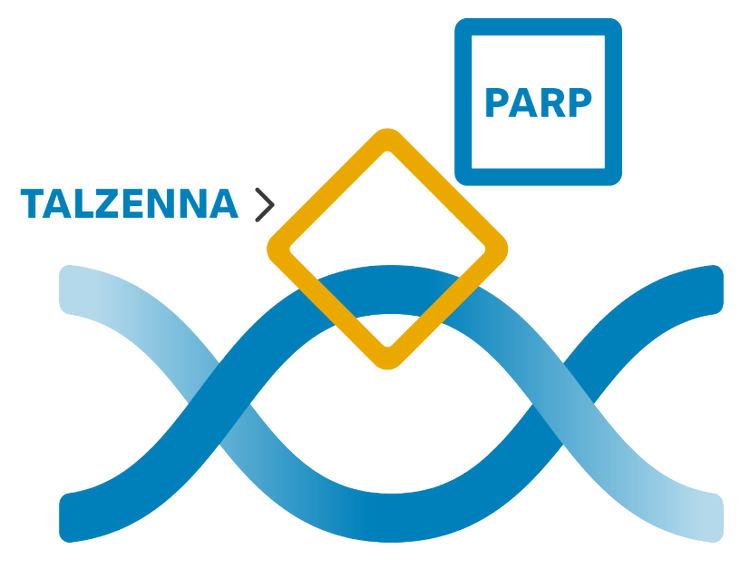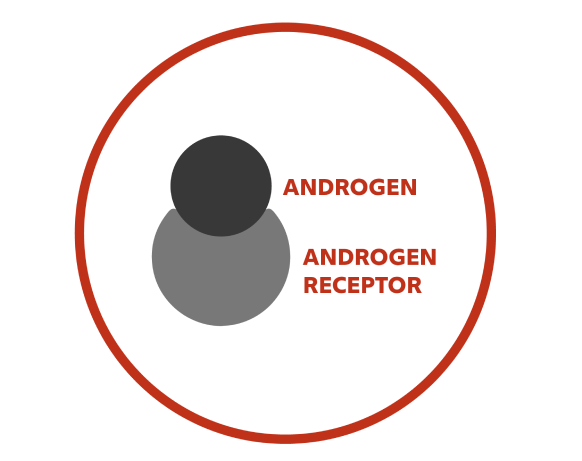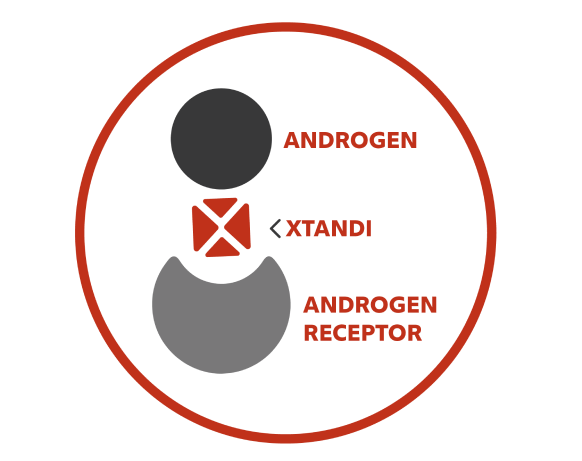

How does treatment work?
TALZENNA + XTANDI treats HRR gene-mutated mCRPC in 2 different ways.
HRR gene-mutated mCRPC = prostate cancer with certain abnormal inherited or acquired genes called homologous recombination repair (HRR genes) that has spread to other parts of the body (metastatic) and no longer responds to a hormone therapy or surgical treatment to lower testosterone (castration-resistant).
How TALZENNA® (talazoparib) works
The short answer: TALZENNA may help inhibit cancer cells from repairing themselves, which could lead to even more cell damage that makes it harder for them to survive.
Here is a more in-depth explanation:

When there’s damaged DNA, called breaks in the DNA strands, proteins such as PARP,* which exist in your cells, help repair the breaks to keep the cells functioning. This occurs for both normal and cancerous cells.
*PARP = poly (ADP-ribose) polymerase.



TALZENNA can also affect normal cells, which can lead to side effects.
This is how TALZENNA was shown to work in laboratory studies. Clinical significance is unknown.
How XTANDI® (enzalutamide) works
XTANDI is an androgen receptor inhibitor.
Androgens are a group of hormones that include testosterone. Androgen receptor inhibitors decrease how often androgens like testosterone connect with an androgen receptor and thereby may slow the growth of prostate cancer tumors and cells. Let's take a look inside the cell.

XTANDI helps decrease how often an androgen can connect with an androgen receptor. As a result, XTANDI can slow cancer cell growth and the cancer cells may die.
This is how XTANDI was shown to work in laboratory studies. Clinical significance is unknown.

Please talk to your doctor or see XTANDI Patient Information for Important Safety Information about XTANDI.
How to take TALZENNA
- Take TALZENNA exactly as your healthcare provider tells you.
- Do not change your dose or stop taking TALZENNA without first talking with your healthcare provider.
- Take TALZENNA in combination with enzalutamide once a day.
- You should start or continue a gonadotropin-releasing hormone (GnRH) analog therapy during your treatment with TALZENNA and enzalutamide unless you have had a surgical procedure to lower the amount of testosterone in your body (surgical castration).
- Take TALZENNA with or without food.
- Swallow TALZENNA capsules whole. Do not dissolve or open TALZENNA capsules.
- Your healthcare provider may change your dose of TALZENNA or tell you to stop taking TALZENNA depending on how you respond to treatment.
- If you miss a dose of TALZENNA or vomit, take your next dose at your regular time. Do not take an extra dose to make up for a missed dose.
Please talk to your doctor or see XTANDI Patient Information to learn how to take XTANDI.
Talk to your doctor about TALZENNA + XTANDI
Our doctor discussion guide can help you ask more focused questions at your next appointment.

